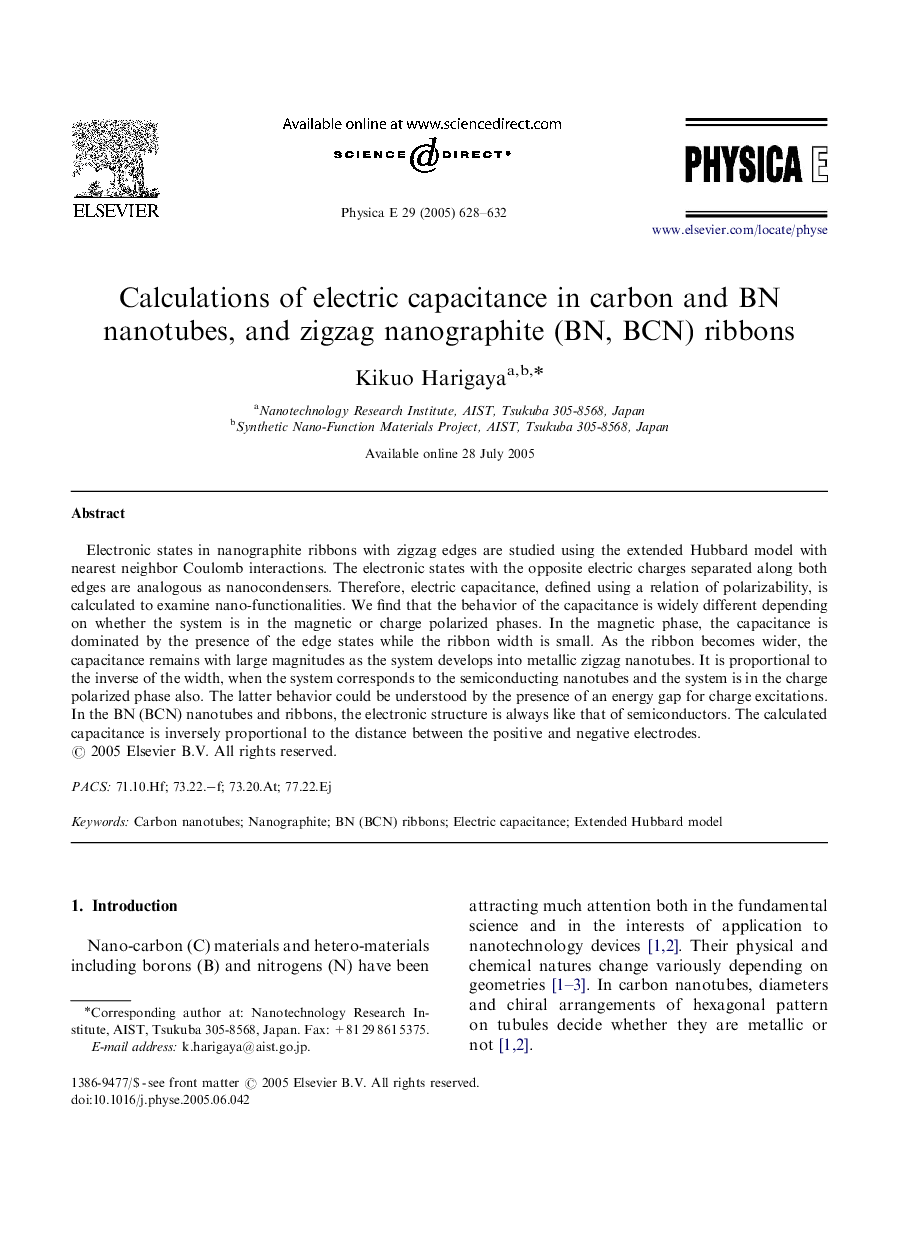| Article ID | Journal | Published Year | Pages | File Type |
|---|---|---|---|---|
| 9789599 | Physica E: Low-dimensional Systems and Nanostructures | 2005 | 5 Pages |
Abstract
Electronic states in nanographite ribbons with zigzag edges are studied using the extended Hubbard model with nearest neighbor Coulomb interactions. The electronic states with the opposite electric charges separated along both edges are analogous as nanocondensers. Therefore, electric capacitance, defined using a relation of polarizability, is calculated to examine nano-functionalities. We find that the behavior of the capacitance is widely different depending on whether the system is in the magnetic or charge polarized phases. In the magnetic phase, the capacitance is dominated by the presence of the edge states while the ribbon width is small. As the ribbon becomes wider, the capacitance remains with large magnitudes as the system develops into metallic zigzag nanotubes. It is proportional to the inverse of the width, when the system corresponds to the semiconducting nanotubes and the system is in the charge polarized phase also. The latter behavior could be understood by the presence of an energy gap for charge excitations. In the BN (BCN) nanotubes and ribbons, the electronic structure is always like that of semiconductors. The calculated capacitance is inversely proportional to the distance between the positive and negative electrodes.
Related Topics
Physical Sciences and Engineering
Materials Science
Electronic, Optical and Magnetic Materials
Authors
Kikuo Harigaya,
